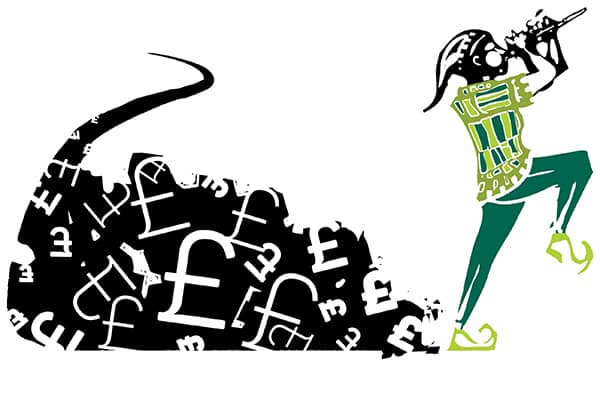One of the most confusing issues with the new rules for IR35 which will come into force next April are the rules surrounding debt transfers.
These act to transfer liability for any income tax and NIC which a fee payer fails to deduct when they have received a status determination statement showing that IR35 applies.
The rules are difficult to understand due to the need to jump around different areas of legislation to gain the full picture; this makes it difficult to focus on the practical steps engagers and agencies can take to limit their risk.
As always, the devil is in the detail and in this case it can be found lurking in the new s688AA ITEPA 2003 (introduced by Finance Act 2020) and proposed new regulations 97LA to 97LK which are to be inserted into The Income Tax (Pay as You Earn) Regulations 2003 by the draft Income Tax (Pay as You Earn) (Amendment) Regulations 2020.
Although regulations 97LA –LK have not come into force yet, this is only because the new IR35 rules were postponed for twelve months. There is little chance that they will not come into force at the start of the new tax year on 6 April 2021
When will a debt be transferred?
Before a debt transfer can arise under the new rules, there must be a failure by the fee payer to operate PAYE.
The fee payer is normally the party in the supply chain who has the contract with the IR35 contractor’s intermediary, but if a Status Determination Statement (SDS) is not passed down to them then existing rules can pass the fee payer’s obligations to the last party to receive the SDS or the client (a deemed fee payer).
The failure we are interested in occurs when the Fee Payer (original or deemed) defaults in deducting or paying over PAYE. This is where the new regulations 97LA – LK will come into action.
These require that:
- The debt must be PAYE tax due under the IR35 charging rules of s61N ITEPA 2003;
- HMRC must consider that there is no realistic prospect of recovery from the fee payer;
- The rules do not apply where the client and the fee payer are the same party;
- The debt must arise under ‘new IR35’ post April 2021; and
- Lastly, a valid recovery notice must be issued to the ‘relevant person’.
Who pays?
The relevant person is defined in s688AA ITEPA 2003, this legislation is also directly tied into the new IR35 provisions, in the same way that the new regulations 97LA – LK are, so it only applies to an IR35 deemed PAYE payment under s61N.
Section 688AA defines the relevant person as being someone other than the deemed employer who was originally liable for the tax and NIC and who is:
- the highest person in the chain identified under section 61N(1) (which is normally the client), or
- the second highest person in that chain and who is also a qualifying person (within the meaning given by section 61N(8)) at the time the deemed employer is treated as having made that deemed direct payment.
The qualifying person provision operates to exclude any party in the chain who is:
- not within the UK or
- has not had a SDS passed to them or
- is controlled by the IR35 contractor.
So after all the section numbers and cross references it boils down to this; if the fee payer makes a payment to the IR35 contractor but defaults on the PAYE and there is no reasonable prospect of getting that money from them, the liability passes to either the client or the next party below the client as long as neither of them are the fee payer, outside the UK or controlled by the IR35 contractor.
Managing the exposure
If you are an end client, keep in mind that the debt transfer risk is likely to be yours. Carry out due diligence to ensure you understand the supply chain and that there is good compliance within the payment chain.
Make sure that the SDS is issued in good time to allow the fee payer to apply the result before making the first payment. Watch for warning signs that tax and NIC is not being handled correctly and take action if this occurs.
If you are an agency sitting in the middle of the chain ensure the SDS is passed on, immediately that you receive it, as this impacts on who the qualifying person is.
The real key is to understand the payment chain and to ensure a good flow of information both upwards and downwards so that any problems are spotted quickly and can be rectified without delay.
(This article first appeared on the Contractor UK website in a slightly different form)

If you would like to speak to one of our IR35 experts about your IR35 status, please contact 0333 321 1403 for details and to book an appointment.


